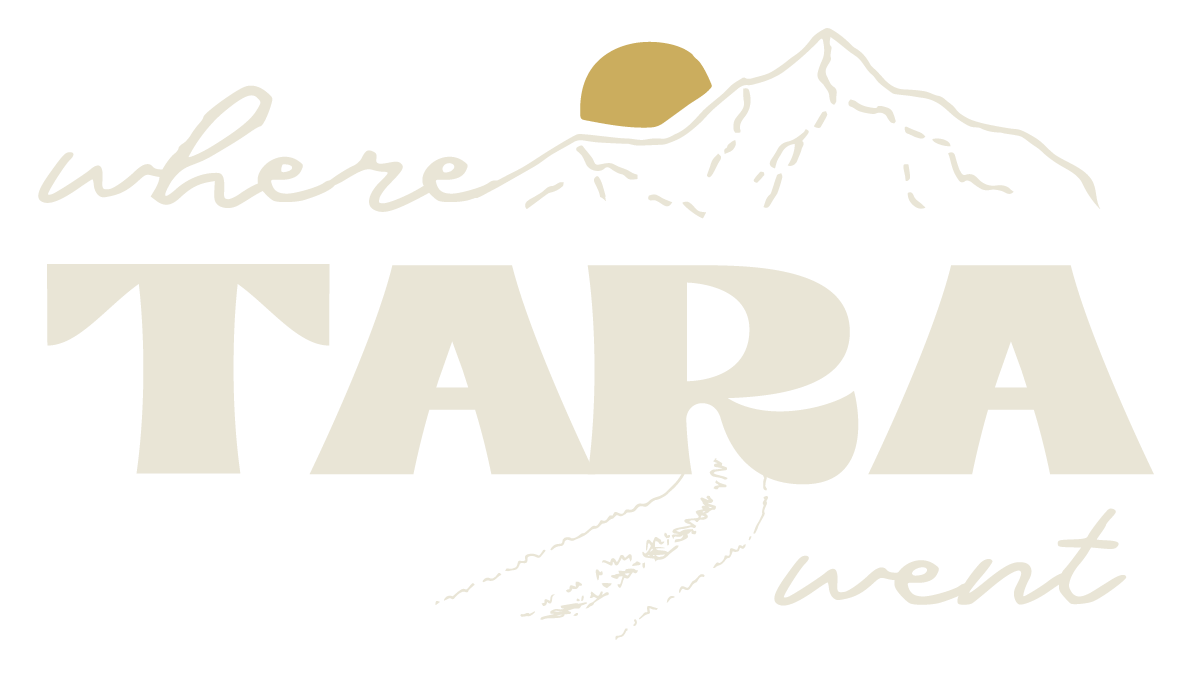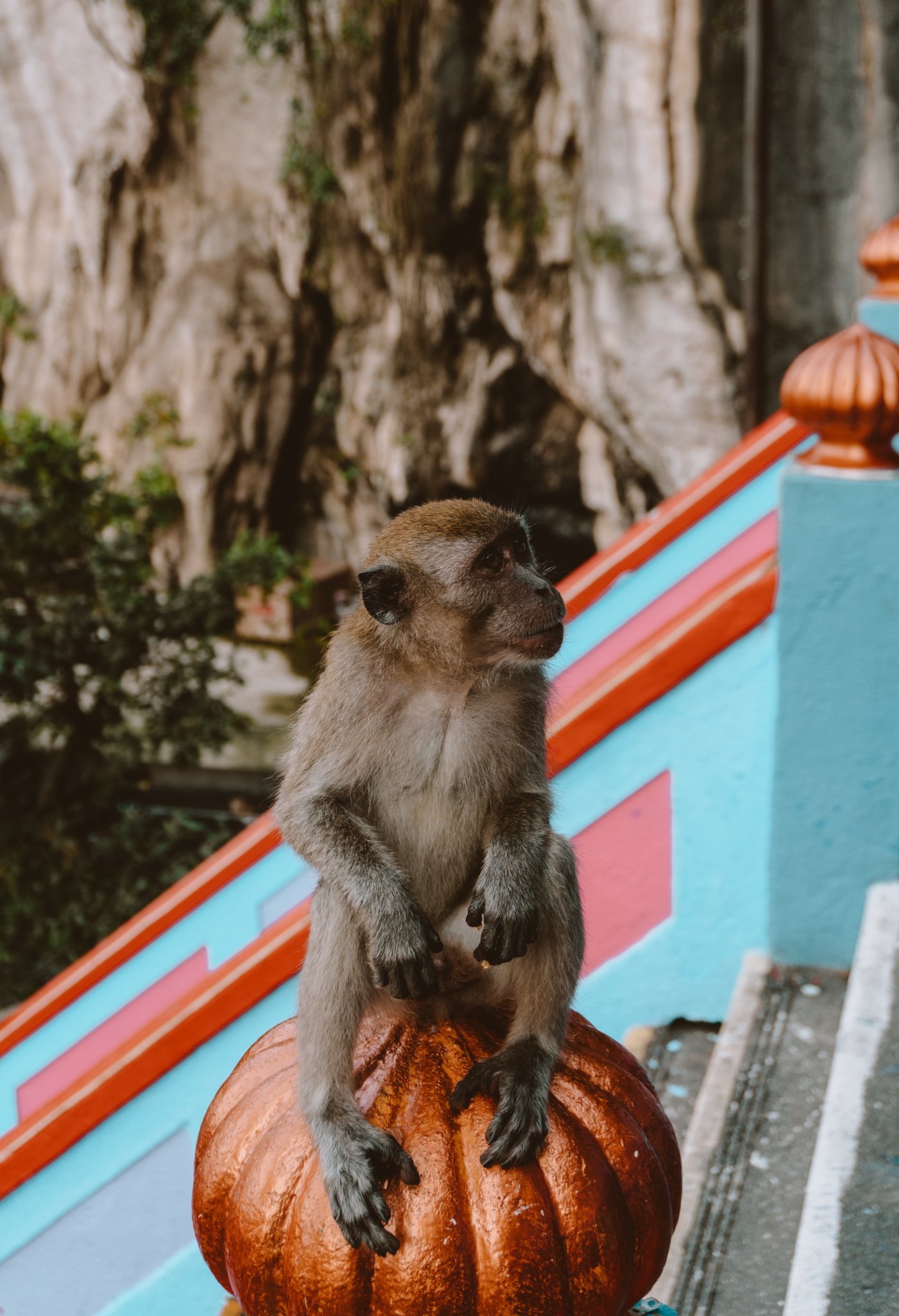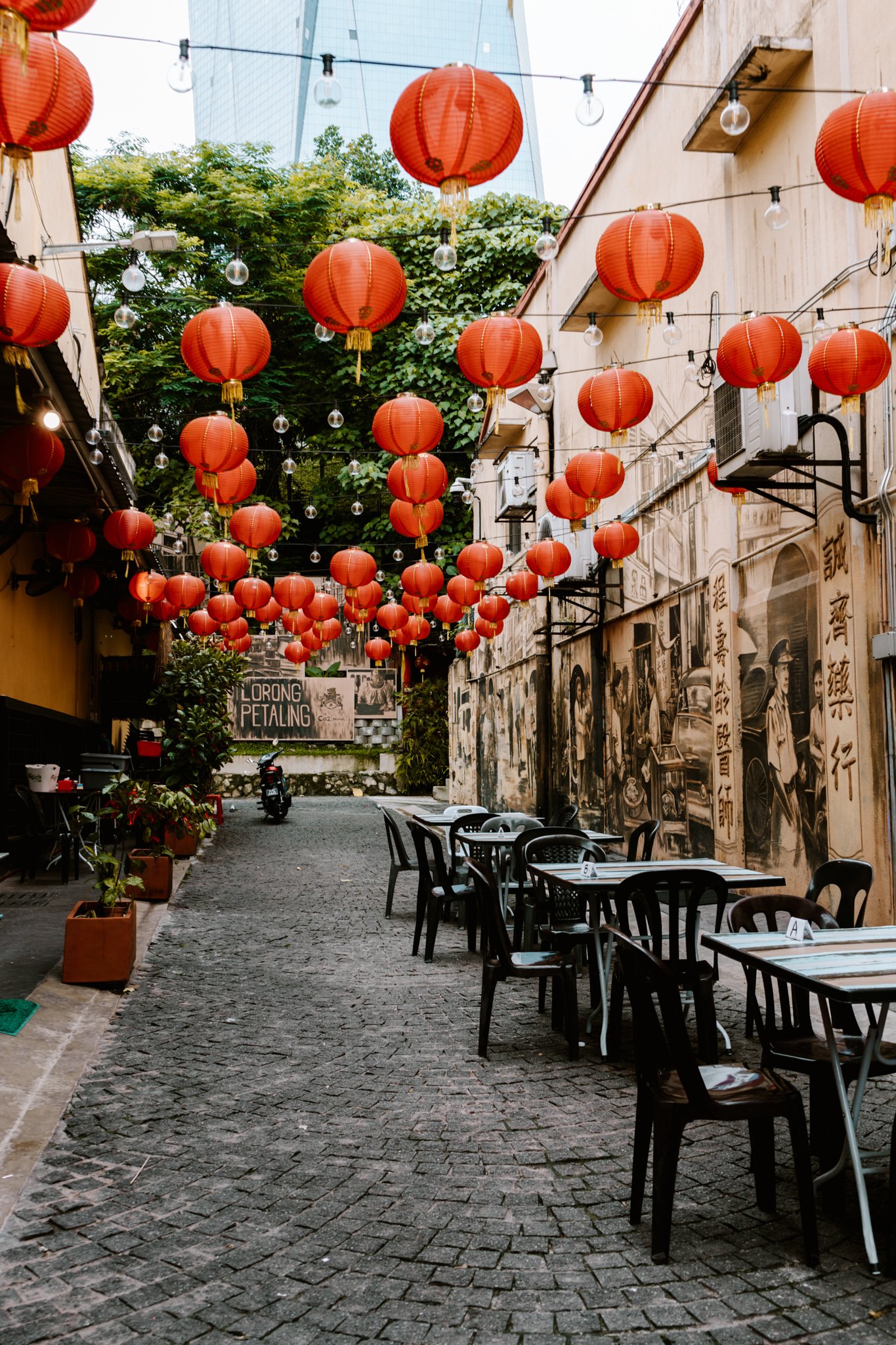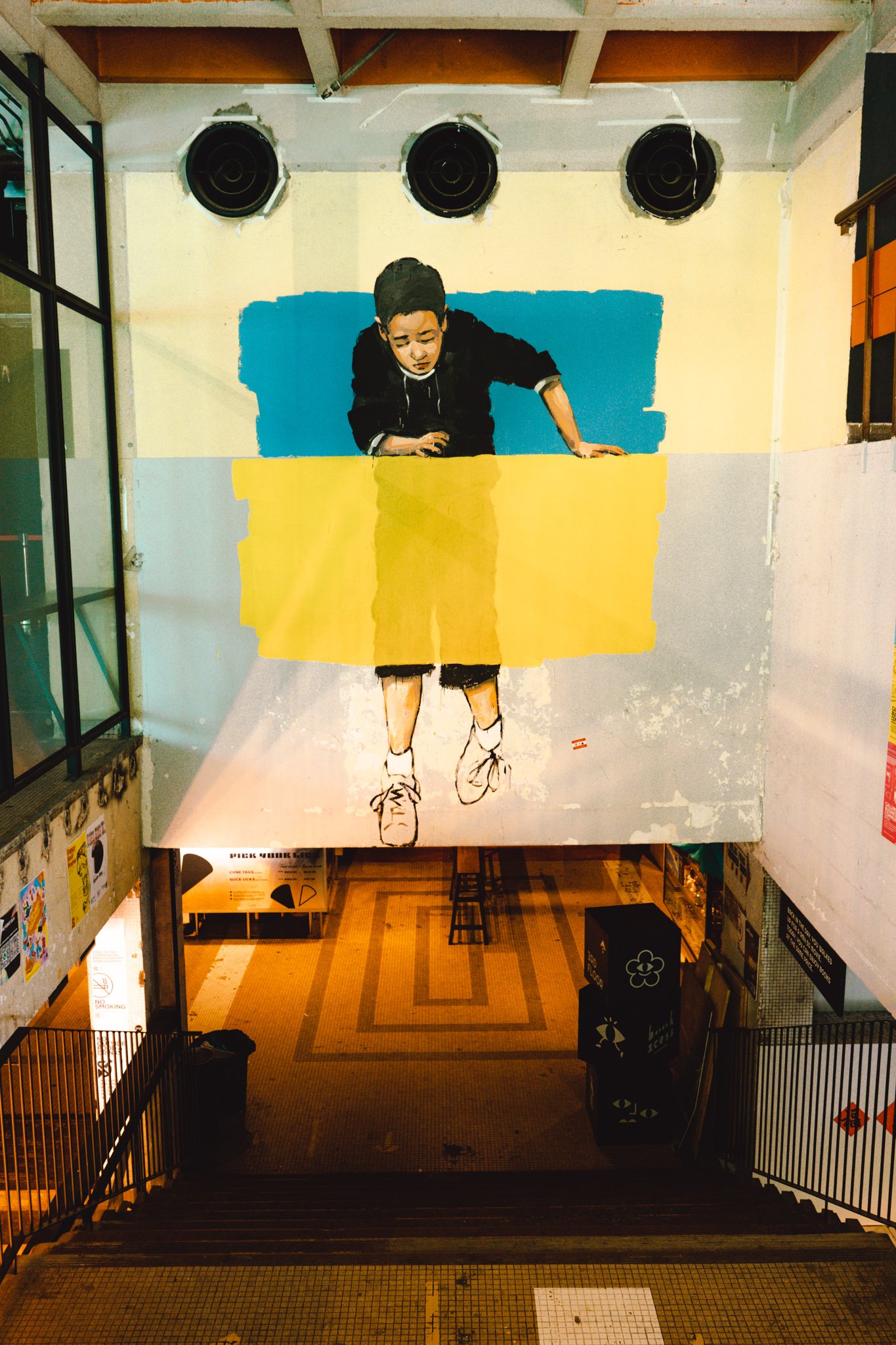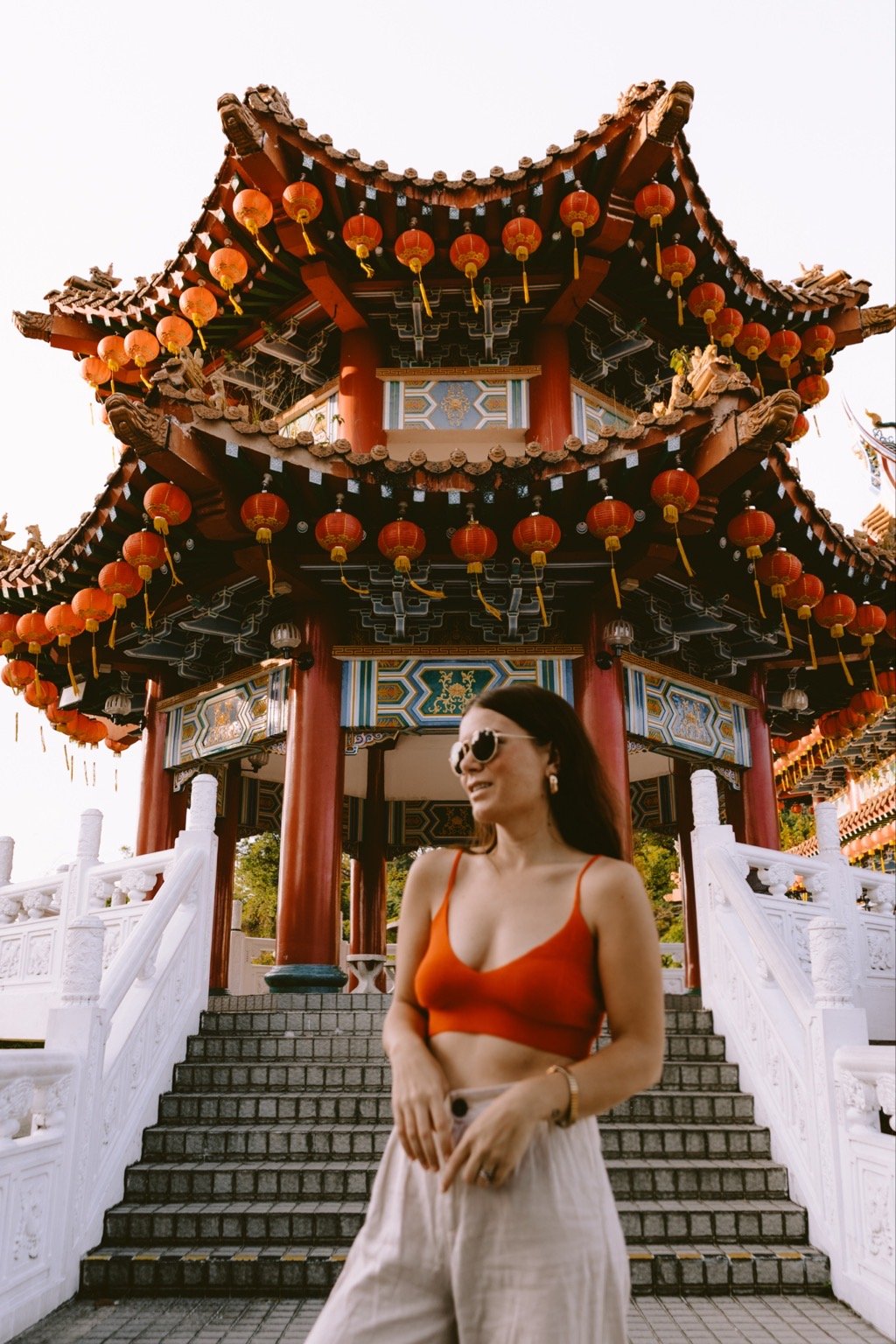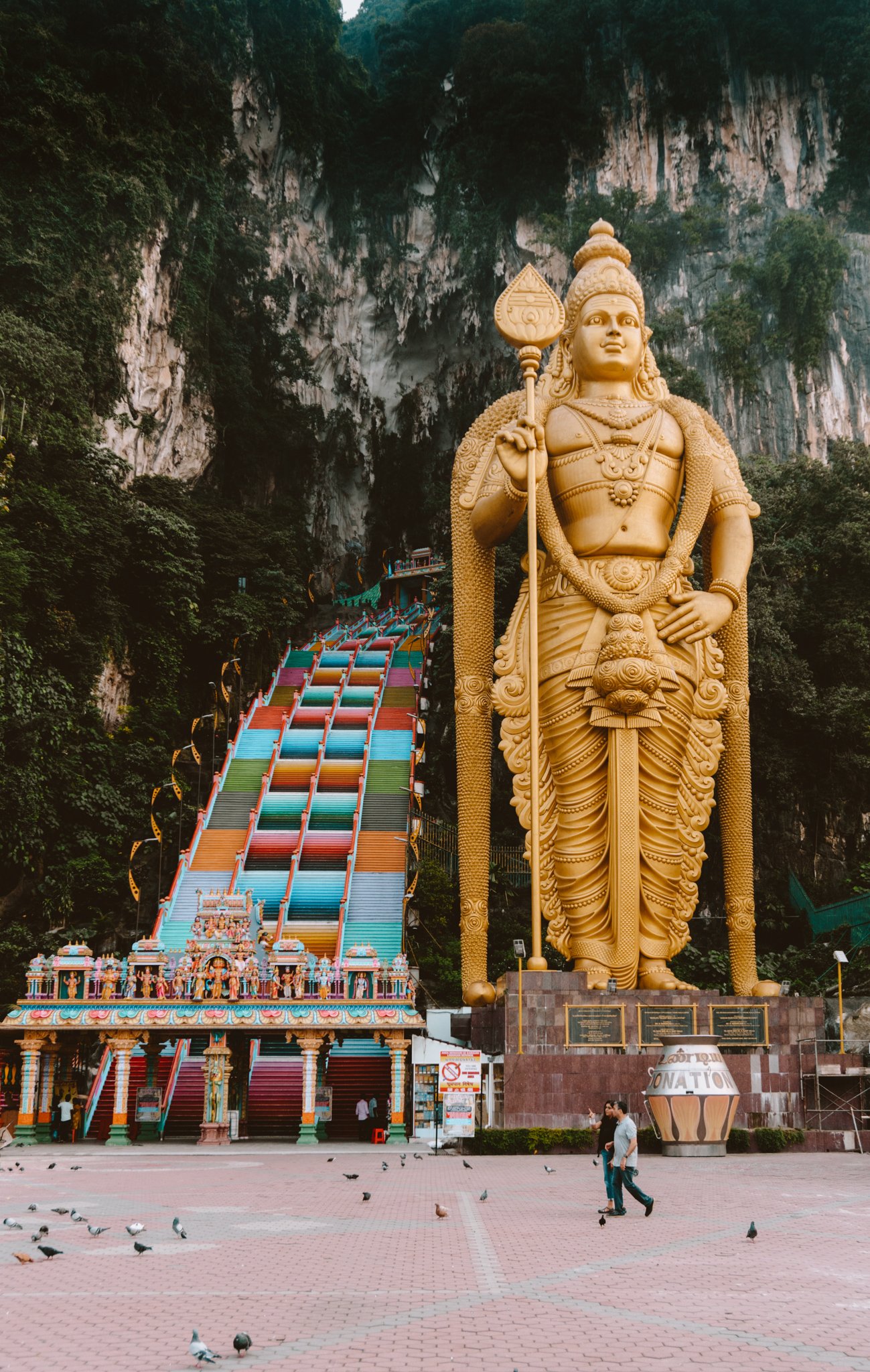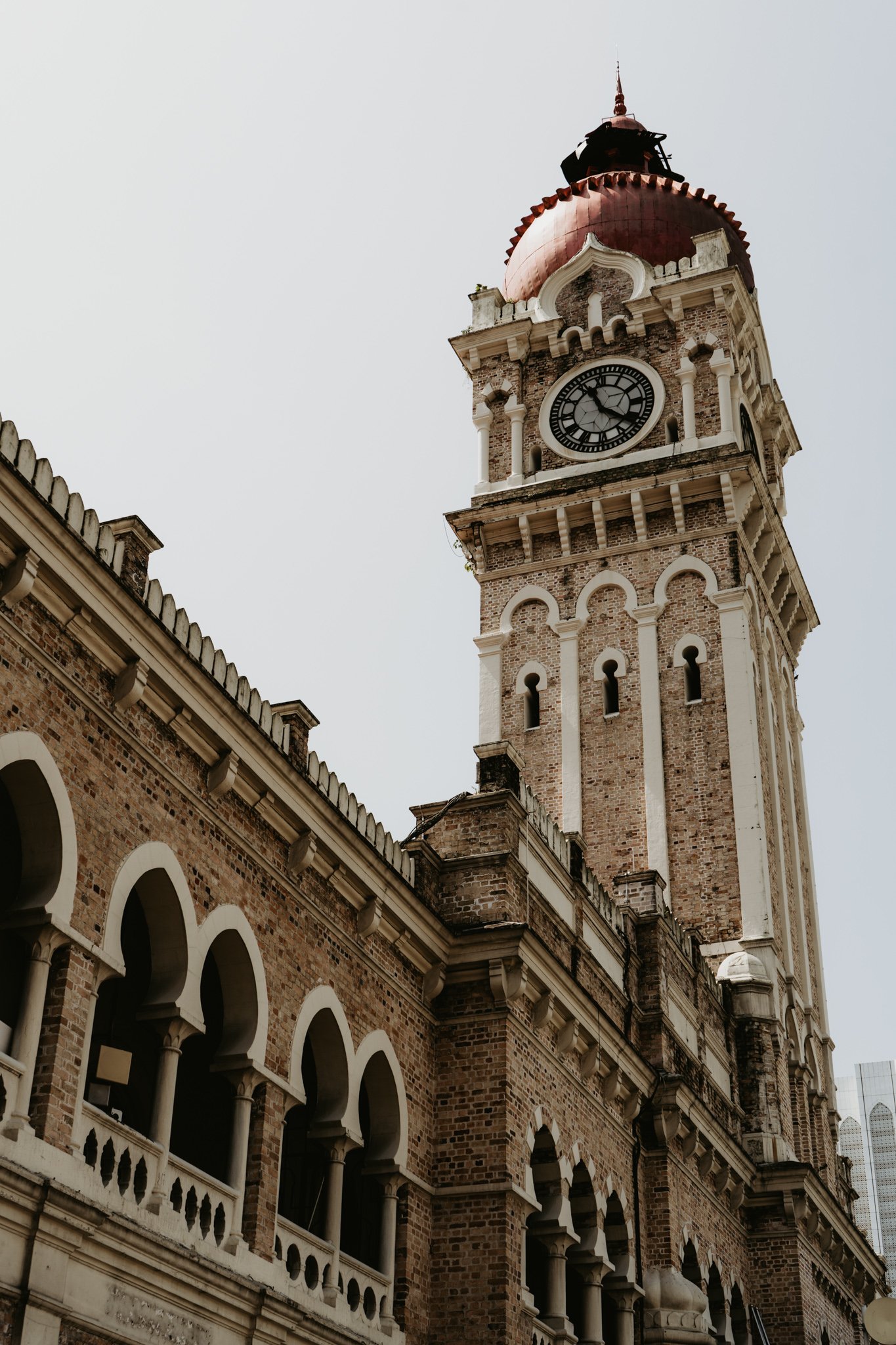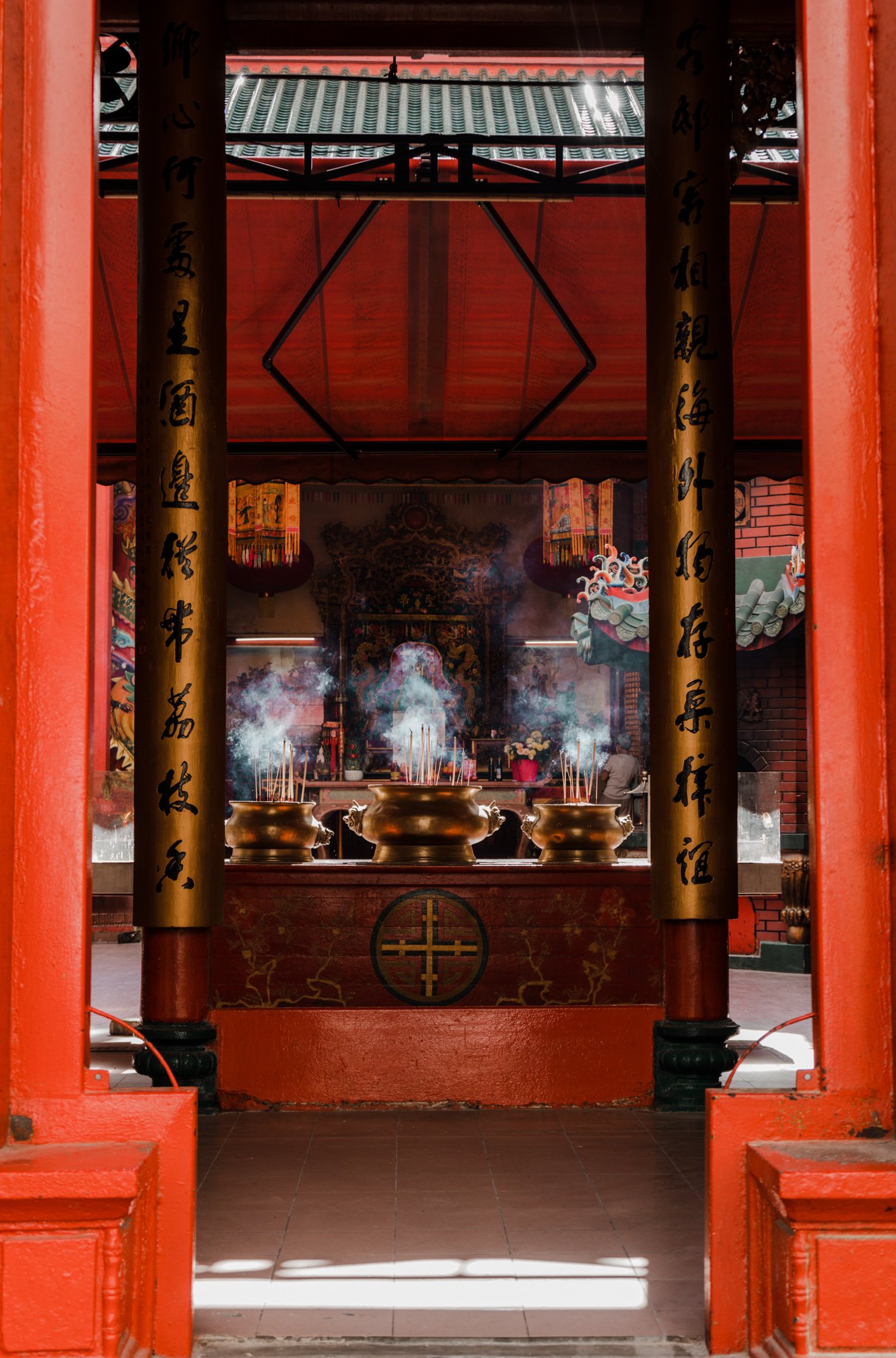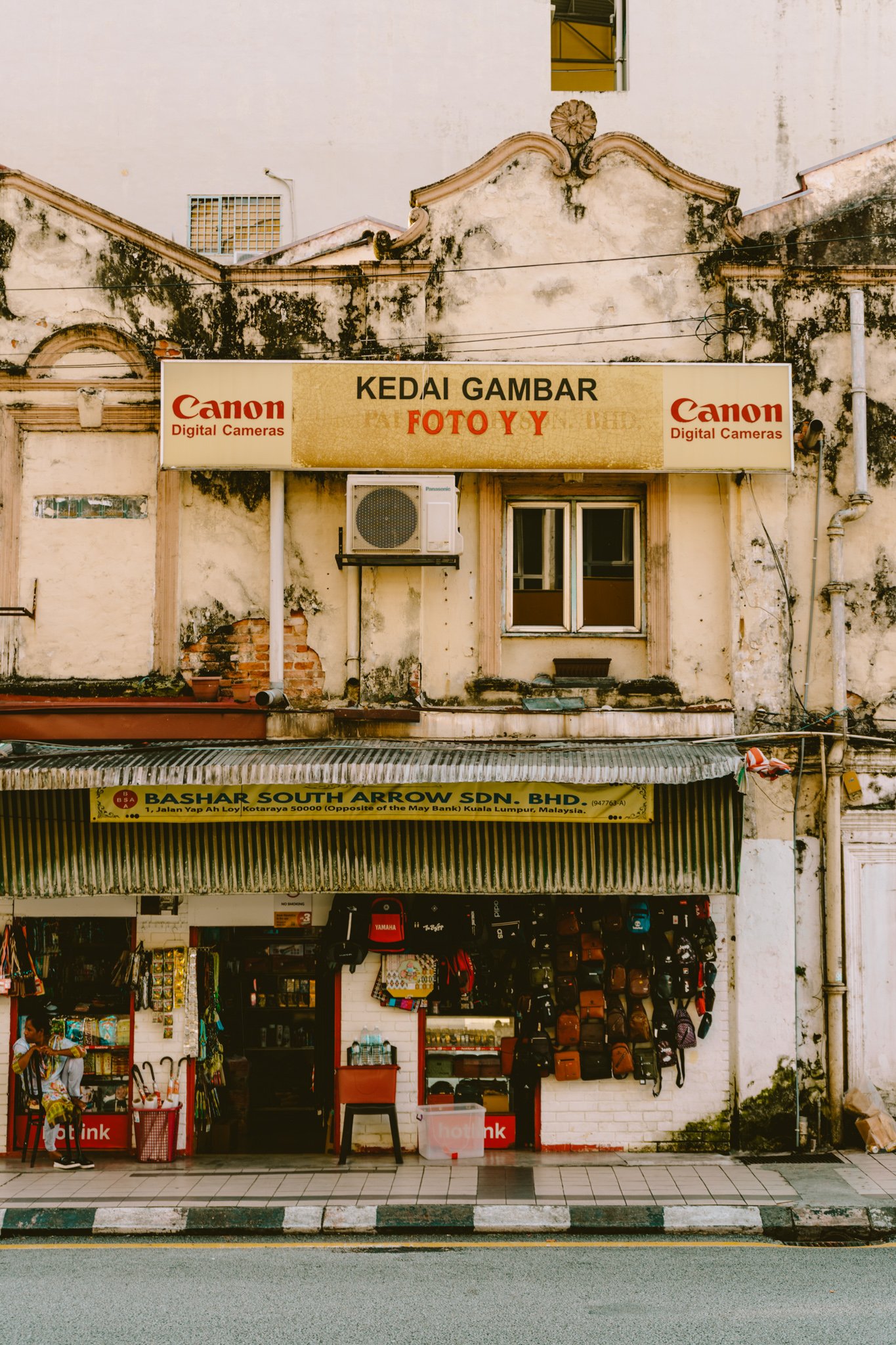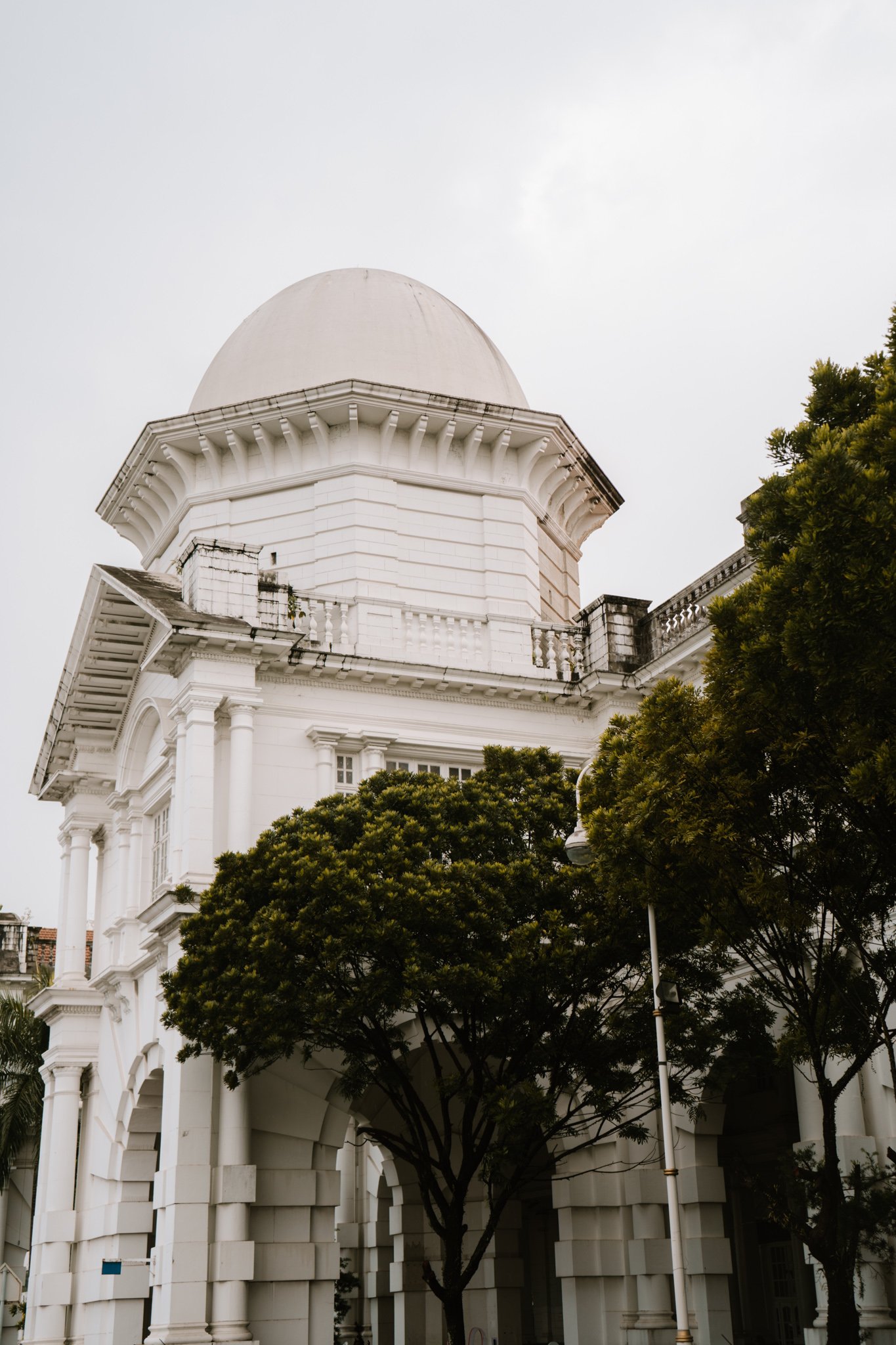Kuala Lumpur Itinerary: 3-day Itinerary for Kuala Lumpur with 16 Things to Do
Kuala Lumpur is a culturally diverse capital city with fantastic food, stunning houses of worship, and a bevy of things to see and do. Here is my epic 3-day itinerary for Kuala Lumpur including where to stay, what to see, and where to eat in this vibrant Malaysian city.
If you're looking for an exciting, affordable, and cultural destination to add to your travel bucket list, look no further than Kuala Lumpur. This vibrant city has so much to offer, and with this 3-day itinerary featuring 16 must-do activities and attractions, you'll get to experience the best of what Kuala Lumpur has to offer.
From exploring the city's most famous landmarks like the Petronas Twin Towers to indulging in delicious street food, this 3-day itinerary for Kuala Lumpur is jam-packed with something for everyone. Whether you're a first-time visitor or a seasoned traveler, you'll be able to make the most of your time in Kuala Lumpur and create unforgettable memories. So pack your bags and get ready to embark on an adventure of a lifetime!
quick tips for travelling to Kuala Lumpur ↴
SIM cards in Malaysia
SIM cards are cheap and easy to obtain upon arriving in Kuala Lumpur. I think it’s helpful to grab one so that you can more easily navigate around the city and hail Grab taxis or Gojek motorbike rides as needed. I recommend purchasing a Celcom SIM card from the airport before you head into the city. Celcom offers SIM cards for a variety of tourist stay durations, but their one-week tourist SIM card option gives you unlimited data for seven days and only costs roughly USD $5.
Malaysian currency
Malaysia’s currency is the Malaysian ringgit (MYR or RM). You will need cash at markets and local restaurants. If you’re looking for a travel-safe card that gets fair market rates, consider signing up for a Revolut or Wise card.
safety in Kuala Lumpur
Kuala Lumpur is a relatively safe tourist destination for travelers, like the rest of Southeast Asia. You should absolutely keep your wits about you and keep an eye on your belongings, but KL is no more dangerous than other large metropolises. You’ll feel better prepared for any bad thing that might happen if you’re traveling with insurance. I tend to travel with World Nomads but have also traveled with Covermore insurance.
when to visit Kuala Lumpur ↴
Kuala Lumpur is a popular destination year-round thanks to its tropical climate. Overall, Kuala Lumpur is a great destination to visit year-round, and the best time to go depends on your personal preferences and travel plans.
The best time to visit Kuala Lumpur is between May and July, and from December to February when the weather is generally dry and pleasant. During these months, visitors can enjoy warm temperatures, clear skies, and lower humidity, making it an ideal time for sightseeing and outdoor activities.
However, I do warn against visiting during peak season, because the city gets crowded and hotel prices tend to shoot up. If you prefer to avoid the crowds and save some money, consider visiting during the shoulder seasons of March to April and August to November. During these months, the weather is still pleasant, although there is more rainfall during these months, and hotel prices are a bit more affordable.
There are roughly three seasons in Kuala Lumpur: summer, monsoon, and winter.
Summer | From March through September, the weather in Kuala Lumpur is very humid and temperatures rise to nearly 30°C.
Monsoon | Kuala Lumpur has two monsoons: east monsoon and west monsoon. Each monsoon hits at a different time of the year. Lighter showers hit during the eastern monsoons, and heavier rains fall during the western monsoons. While the rainy season can put a damper on plans, it shouldn’t deter you entirely, as some monsoon seasons barely see rainfall outside of light afternoon showers. It’s entirely a gamble.
Winter | The coldest weather in Kuala Lumpur occurs between January and February. The weather during the winter is dry and the temperatures stay mild (around 27°C during the day and 23°C during the night).
how many days to spend in Kuala Lumpur ↴
Three days in Kuala Lumpur is, in my opinion, the perfect amount of time to explore the city, especially if it’s you are a first-time visitor. In three days, you can visit the main attractions of the city, eat at plenty of KL’s famous foodie spots, and even indulge in a little shopping along the way. If you have an extra day or two, you could tag on a day trip to nearby Ipoh or Malacca.
where to stay in Kuala Lumpur ↴
Finding the right area of the city to base yourself in is essential in Kuala Lumpur. The main sights are relatively condensed, but the city itself is rather spread out and not every area is pedestrian-friendly. I recommend staying in one of these three neighborhoods:
Bukit Bintang | located in the mural-covered Bukit Bintang, here you’ll be near the city center and within walking distance of Chinatown, Petronas Towers, and Jalan Alor food market
Chinatown | surrounded by cafés and shopping, and located near major city landmarks like Merdeka Square and Central Market
Chow Kit | a little farther outside of the city center, but in good proximity to food and main city sites
Kuala Lumpur is a fantastically affordable city in terms of accommodation. There is something for nearly every budget in KL, and the city is brimming with Airbnbs, boutique hotels, and chic hostels to stay in. If you’re looking for specific hotel recommendations, from my own experience I highly suggest:
KLoé Hotel | KLoé is a chic hotel with an industrial vibe in a central location. A co-working space, café, and a rooftop swimming pool are just some of the many on-site amenities available.
MoMo’s Kuala Lumpur | Minimal rooms located in the heart of Chow Kit. Their motto is “everything you need and nothing more.” MoMo’s is ideal for digital nomads thanks to its wonderful “work from hotel” packages, including free-flowing coffee.
The Kuala Lumpur Journal Hotel | A beautiful boutique hotel with a swimming pool and swim-up bar. The rooms are large and they have a sleek, urban design.
Airbnb | There are plenty of Airbnb stays in areas like Bukit Bintang that include a gym and infinity swimming pool if you happen to be visiting for a longer duration.
We love using Booking.com to book the best places to stay around the world.
how to get to Kuala Lumpur ↴
Getting to Kuala Lumpur is super easy! You can use buses and trains from nearby countries or book a flight from around the world to arrive in KL. The city is served by Kuala Lumpur International Airport (KLIA), which is located south of the city center. The airport is a major hub for Asian airlines and connects flights to destinations throughout Asia, Europe, and the Americas. You can also take a train to Kuala Lumpur, with direct connections from neighboring countries such as Singapore and Thailand.
getting around Kuala Lumpur ↴
Kuala Lumpur is easy to navigate on foot or by utilizing the efficient public transportation system, which includes the LRT, MRT, monorail, and bus systems. In my experience, KL public transport is clean and affordable, but it often runs a bit off schedule, so if you’re in a time-sensitive situation consider using a ride-sharing app (see below). You can use Google Maps to help direct you around the city, taking whatever form of transport it recommends.
public transport
The KL bus system in KL, called RapidKL Bus, requires a card. You tap when you get on and off the bus and will be charged for your ride accordingly.
You can utilize the Mass Rapid Transit (MRT) metro system to get around the main city center and the Light Rail Transit (LRT) metro system for things outside the city center. I used the metro a lot on my first few visits to Kuala Lumpur and found them clean and air-conditioned. Some trains had separate carriages for men and women, which is. a great option for those who are a bit uncomfortable or traveling alone. I recommend using the Komuter train system for a visit to Batu Caves. Again, the trains are clean and air-conditioned.
ride-sharing
If you’re not up for navigating public transportation, there are plenty of taxis and ride-sharing services available throughout the city. I recommend downloading the free app Grab (similar to Uber) to get around if you’re tight on time. I wouldn’t recommend using regular taxis, as the drivers have a reputation for ripping people off.
suggested 3-day itinerary for Kuala Lumpur ↴
DAY 1: BATU CAVES, Brickfields, KL FOREST ECO PARK, + PETRONAS TOWERS
Kickstart your time in Kuala Lumpur with a visit to the Batu Cave Temples by train. Make your way back into the city for a morning spent above the skyscrapers at KL Forest Eco Park’s canopy walkway. From there, walk to the Petronas Towers, stopping to shop along the way.
DAY 2: THEAN HOU TEMPLE, CHINATOWN, MERDEKA SQUARE, + CENTRAL MARKET
For Day 2 of this Kuala Lumpur itinerary, you’ll need the Grab taxi rideshare app. It will be the easiest way to get around and save you time. Luckily, it’s also very affordable. The first stop of the day is Thean Hou Temple. I recommend getting there in the morning for opening at 8 AM. You’ll want an hour to explore the multiple floors of the temple complex.
From Thean Hou Temple, get a Grab taxi to nearby Breakfast Thieves in Bangsar for brunch. Breakfast Thieves is one of my favorite cafés in the city. The antipodean café serves Australian barista-style coffee and delicious food. Next, make your way to Chinatown in yet another Grab taxi. Wander the many shops, and don’t miss Petaling Market. If you’re hungry, Chinatown has plenty of eateries, including trendy cafés and street food.
Walk from Chinatown to Central Market. Central Market has air-conditioning, making it a glorious shopping escape from the Malaysian heat and humidity. From Central Market, it’s a short walk to Merdeka Square.
DAY 3: PERDANA GARDENS, BUKIT BINTANG, + JALAN ALOR FOOD MARKET
Perdana Gardens is more enjoyable in the early hours when the Malaysian heat hasn’t quite kicked in. Next, wander around the endless street art in Bukit Bintang, ending the day with dinner at the Jalan Alor food market. Make sure to try Nasi Lemak if you are a meat eater, and don’t leave without tasting the market’s deep-fried ice cream!
OPTIONAL DAY 4: DAY TRIP TO Ipoh, Malacca, or Cameron Highlands
A day trip to one of the many nearby cities or outdoor getaways is a must if you have four or five days in Kuala Lumpur. I suggest either getting outside the city and venturing to the Cameron Highlands, checking out the street art and temples in Ipoh, or exploring the unofficial historic capital of Malaysia, Malacca.
16 things to see + do in Kuala Lumpur ↴
Thean Hou Temple
Possibly one of the most visually striking temples in Kuala Lumpur, Thean Hou Temple is one of the largest Chinese temples in Southeast Asia. Spanning six levels and inclusive of a cafeteria, garden area, and zodiac trail, you could easily spend an hour here. Its hilltop location gives you a view of the entire city from above, so bring your camera. Best yet, it’s completely free to enjoy!
ADMISSION | free
KL Forest Eco Park
Hidden in plain sight in the center of the city, KL Forest Eco Park houses a trail of hanging walkways hiding in the canopy treetops. It used to be free to enter but now costs 40 MYR to enter, which is unfortunate, because while the views of KL Tower and the city’s many skyscrapers are fantastic, I feel like it’s now priced a little too high for what you get. Still, it makes this list as it’s a fun way to spend an afternoon and a great place to take photos.
ADMISSION | 40 MYR per person
Batu Caves
Nestled just outside of Kuala Lumpur, the Batu Caves are an iconic and mesmerizing attraction that showcases the harmonious blend of natural beauty and religious significance. These limestone caves, dating back millions of years, are home to several Hindu temples and shrines, making them a significant pilgrimage site for devotees. As you ascend the 272 colorful steps leading to the main cave entrance, you'll be greeted by a towering statue of Lord Murugan, a Hindu deity. Once inside, the grandeur of the cavernous space leaves visitors in awe, with sunlight streaming through openings in the ceiling, illuminating the intricate statues and shrines. The Batu Caves are not only a religious and cultural treasure but also a haven for nature enthusiasts, offering picturesque views of the surrounding limestone formations and lush greenery. Batu Caves is an iconic landmark that will leave you captivated by its scale and beauty.
ADMISSION | free
KL Tower
While a visit to KL Tower is definitely “touristy”, it’s also worth doing just once. KL Tower has been the 7th tallest tower in the world since 1996, and at the top, you’ll be able to view endless city scenes. You can enjoy KL Tower in two different ways: you can just enjoy the Observation Deck, or you can buy a ticket for the Observation Deck and the Tower Sky Deck. It’s not super budget-friendly, but it’s worth paying for if you like views.
ADMISSION | 99 MYR at the tower, or book cheaper tickets online and in advance here
Little India
Little India, also known as Brickfields, is located just a few minutes from KL’s main train station (KL Sentral). This area of town is rich with Indian eateries and storefronts adorned with stacks of shiny bangles and colorful sarees. It’s commonly called as Brickfields because this area mined and fired clay into bricks for use throughout KL in the 1800s.
Sri Kandaswamy Kovil Temple | A beautiful Saivite-style temple that is over 100 years old
Legend’s Claypot Biryani | A landmark restaurant that famously serves Muslim-Indian biryani in clay pots
Nu Sentral | A modern shopping complex
ADMISSION | free
National Museum
The National Museum is constructed in the shape of traditional houses and includes traditional design elements from multiple cultures. You can visit the National Museum to learn all about the history and culture of Malaysia. From Malay houses and hunting methodologies. to wedding ceremonies and dress, there is plenty to be learned by visiting this extensive museum.
ADMISSION | 5 MYR for foreign tourists
Kuala Lumpur Railway Station
While this is no longer Kuala Lumpur’s main railway station (that title belongs to KL Sentral Station), Kuala Lumpur Railway Station has been transformed into a mini-museum filled with examples of both British and Asian architecture. You can stroll through the former “Great Hall” of the station to check out train models and locomotive replicas.
ADMISSION | free
Putrajaya Mosque
The Putra Mosque is the main mosque of Putrajaya, a “suburb” of Kuala Lumpur of sorts. The mosque took two years to build and was completed in 1999. Its massive soft pink structure sits on the banks of Putrajaya Lake, a man-made body of water. It’s a pretty far distance outside of Kuala Lumpur city center, but it’s absolutely worth visiting, especially at golden hour. You’ll need to come dressed conservatively with your knees, shoulders, back, hair, and cleavage covered.
ADMISSION | free
Wilayah Mosque
Wilayah Mosque is a relatively modern mosque having been built in 2000, but its architecture is nothing short of breathtaking. Inspired by the Blue Mosque in Istanbul, Turkey, Wilayah Mosque is a can’t-miss in Kuala Lumpur. If you’re visiting, please be respectful, the same way you would (hopefully) at any house of worship, dressing conservatively. Clothing is provided free of charge to help you cover up appropriately, but it’s always good to arrive with your knees and shoulders covered. Entrance into Wilayah is free of charge!
ADMISSION | free
wander through Chinatown
Chinatown is a hub for markets, street food, and temples. You’ll absolutely want to pop Chinatown onto your Kuala Lumpur itinerary so that you can taste traditional cuisines, haggle with market vendors, and wander through the porticoes of this cultural hotspot.
Things to do in Chinatown:
Chan See Shu Yuen Temple | This is one of the largest and oldest surviving Buddhist temples in Malaysia! It’s believed to have been built between 1897 and 1906 and features an eye-catching kwang-tung roof and pillars painted with depictions of dragons and other Chinese mythological beasts.
Central Market | Previously an old wet market, KL’s Central Market is now an air-conditioned indoor market with boutique-like shops and souvenir stores. When the market was renovated, the facade was restored to its art deco glory.
Petaling Market | Petaling Market is a long, undercover cacophony of designer knock-offs and cheap tech gadgets. While it’s absolutely chaotic during peak hours, it is always entertaining to watch the deals being struck along the narrow street. There is also plenty of street food to indulge in here, including traditional Chinese steam buns, coconut pancakes, and grilled chicken feet.
Guan Di Temple | An incense-filled Taoist temple with high ceilings and signature red walls.
Sri Maha Mariamman Temple | This ornate Hindu temple is dedicated to the South Indian goddess Parvati. Looming 23 meters tall, the colorful carvings that cover the exterior of the temple make it impossible to miss, even in a place as overstimulating as Chinatown. Don’t miss the shrine to Ganesh!
Kuan Yin Temple | This temple, built in 1880, is dedicated to the Goddess of Mercy. Its mix of Chinese and European baroque architecture makes it deserving of a visit.
telekom museum (Muzium Telekom)
The Telekom Museum (also known as Muzium Telekom) has exhibits that depict the history of telecommunications in Malaysia. The first exhibits start with the history from the 1870s and lead up to the present. From Morse code to telegraph lines, this museum covers it all with interactive and engaging exhibits.
ADMISSION | 11 MYR
visit the many markets
Jalan Alor | A wide street lined with street food stalls, restaurants, and folding chair seating. Dinner at one of the food stalls in Jalan Alor is a great way to experience KL’s hawker culture. Things to try here include char kway teow, bak kut the, and deep-fried ice cream.
Petaling Market | Shop here for everything from phone cases to hats and clothes.
Jalan Sultan | A densely packed street food market in Chinatown.
Pasar Borong Selangor | A giant market specializing in seafood and produce. If you arrive by 4 AM, you’ll be guaranteed to purchase the freshest fish and fruit around.
Chow Kit | This is not my favorite market in Kuala Lumpur, but it is the largest wet market in the city. Here you’ll find butchered meat and fish in tanks, as well as rows and rows of vegetables and fruits.
Taman Connaught | A food market stretching over two kilometers!
enjoy a drink from a rooftop bar
Kuala Lumpur is home to a number of fancy rooftop bars that offer views of the city from above. I highly recommend a drink at:
The Helipad Lounge | an active helicopter platform that transforms into a bar at 6 PM every evening
Vertigo | a stylish bar on the 59th floor
Man Tao Rooftop Bar | an airy terrace only open three days per week
The Swimming Club | located on the top of the KL Journal boutique hotel in the Bukit Bintang area
LOOP KL | a rooftop bar + pool filled with quirky floaties
Merdeka Square
Merdeka Square (Dataran Merdeka) is the spot in Malaysia where independence was declared on August 31st, 1957. The square is surrounded by colonial-era landmark buildings depicting various styles of architecture, including Moorish, Moghul, Colonial and Straits Chinese. Follow the heritage walking trail and take in the sights like the Sultan Abdul Samad building and the Queen Victoria Fountain.
ADMISSION | free
eat, eat, eat
Kuala Lumpur is a foodie capital! One of the most enjoyable things to do is indulge in the variety and wealth of flavourful food available in the city. From Indian cuisine to Malay dishes, Chinese food to street food markets, you’ll find no shortage of food to eat in Kuala Lumpur. If you happen to be looking for brunch in particular, check out my post with the best breakfast and coffee spots in KL here.
Some great places to try local eats are:
Ali, Muthu + Ah Hock Kopitiam | Malaysian breakfast and lunch, such as the Nasi Lemak Ayam and Hainanese Chicken Rice.
Mee Tarik | A Muslim-friendly restaurant.
Heun Kee Claypot Chicken Rice | Famous for its chicken dishes cooked in clay pots over charcoal fires.
Ho Kow Hainam Kopitiam | Affordable Malaysian breakfast you cannot miss!
Some great local dishes to try are:
Nasi Kandar | essentially this is rice served with toppings such as curry, fish, egg + okra
Nasi Lemak | rice cooked in coconut milk accompanied by hard-boiled eggs, sambal, veggies, + (usually) spicy chicken
Roti Jala | a net-like crepe created with batter thrown haphazardly onto a giant, hot skillet
Apam Balik | a pancake-like snack stuffed with heaps of sugar + peanuts
Mee Goreng Mamak | an Indian, Muslim-friendly dish made of yellow noodles, beef or chicken, veggies, eggs, + soy sauce
Cendol | a very sweet drink, usually an alarmingly bright color
Petronas Towers
As the second-tallest twin towers in the world, the Petronas Towers are a bit of a must-see in Malaysia. It’s hard to miss the 452-meter-high towers that loom across KL’s skyline. You won’t be able to miss the towers around the city (if you’re looking up), but you can actually visit inside the towers by booking online in advance. Make sure not to miss the backside of the towers via the KLCC Park, which is free to visit and gives you an alternative photo opportunity!
ADMISSION | free to view from below or book tickets for inside the towers here
day trips from Kuala Lumpur ↴
Kuala Lumpur’s location in Malaysia means there are a number of quick and easy day trips to be had. Popular day trips include Ipoh, Malacca, and the Cameron Highlands, which are all easily reachable by car, train, and bus.
Malacca | 2 hours away from Kuala Lumpur, known for antique shops and its night market
Ipoh | 2.5 hours away from Kuala Lumpur, famous for its cave temples and street art
Cameron Highlands | 3.5 hours away from Kuala Lumpur, travelers visit its hiking trails and scenic tea plantations
map ↴
Find everything you need for the perfect 3-day itinerary in Kuala Lumpur, Malaysia on the map below.
